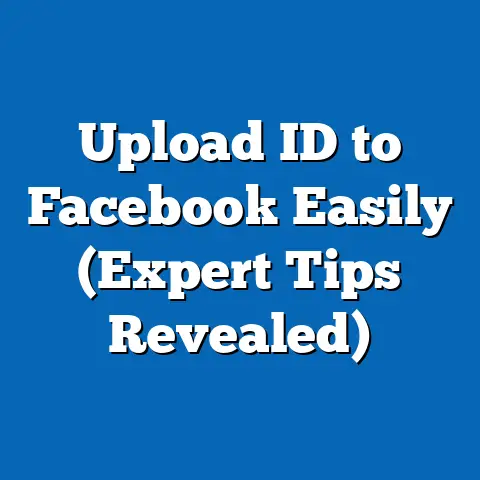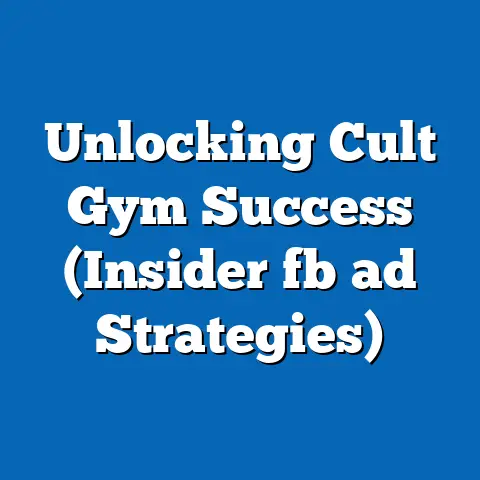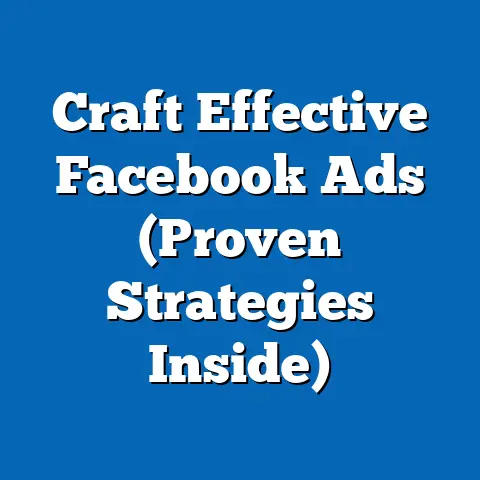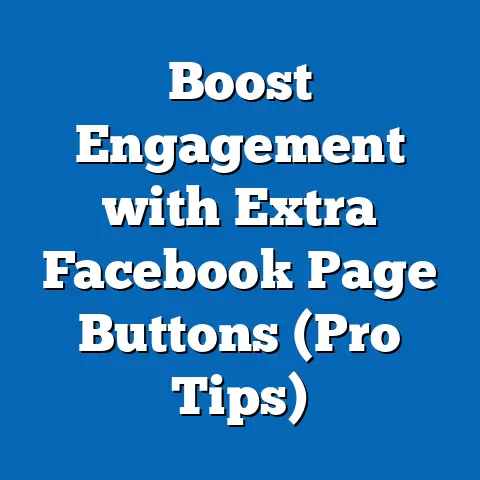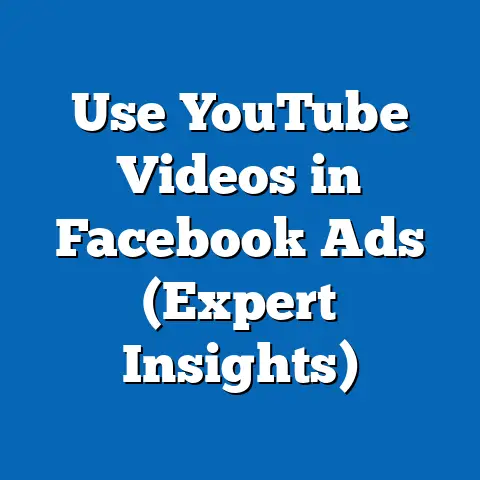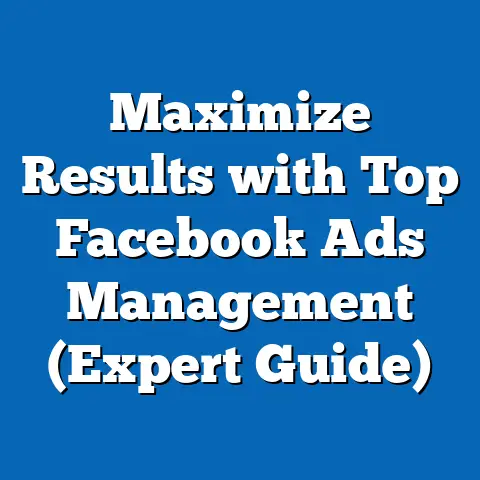Mastering Facebook Ads: Essential Best Practices (Expert Guide)
Facebook advertising. Just hearing those words can send shivers down the spines of some marketers, while others see it as a goldmine. I’ve been in the trenches with Facebook Ads for over a decade, and let me tell you, it’s a constantly evolving landscape. One thing that remains constant, however, is the power of a well-executed, layered approach. In this guide, I’m going to share my hard-earned knowledge and best practices to help you master Facebook Ads.
The key to success isn’t just about throwing money at the platform and hoping for the best. It’s about understanding the nuances of targeting, crafting compelling creatives, and optimizing your campaigns with data-driven insights. Think of it like baking a cake – you can’t just throw all the ingredients together and expect a masterpiece. You need to carefully measure each component, understand how they interact, and bake it at the right temperature. That’s what we’re going to do with Facebook Ads.
The market is fiercely competitive. According to Statista, Facebook’s advertising revenue worldwide reached almost 135 billion U.S. dollars in 2023. With so many businesses vying for attention, you need to go beyond the basics. This guide is designed to help you build a robust, multi-faceted strategy that will cut through the noise and deliver real results.
So, buckle up, and let’s dive into the world of Facebook Ads!
Section 1: Understanding the Facebook Ads Ecosystem
Before we start layering, we need to understand the foundation. Facebook Ads isn’t just a simple platform; it’s a complex ecosystem with its own rules and language.
Overview of Facebook Ads
Facebook Ads are, quite simply, advertisements that appear on Facebook, Instagram, Messenger, and the Audience Network. They’re a powerful tool for reaching a massive audience and driving specific business outcomes. Whether you’re looking to increase brand awareness, generate leads, or drive sales, Facebook Ads can be tailored to meet your goals.
But what makes them so effective? It’s the combination of reach and precision. Facebook boasts billions of active users, and its sophisticated targeting options allow you to laser-focus your message on the people most likely to be interested in your product or service.
There’s a wide variety of ad formats available, each with its own strengths:
- Image Ads: Simple yet effective, these ads use a single image to capture attention. They’re great for showcasing products or services in a visually appealing way.
- Video Ads: Video is king in the digital world, and Facebook is no exception. Video ads are highly engaging and can be used to tell stories, demonstrate products, or share testimonials.
- Carousel Ads: These ads allow you to showcase multiple images or videos in a single ad unit. They’re perfect for highlighting different features of a product or telling a more complex story.
- Collection Ads: Designed for e-commerce, collection ads allow users to browse and purchase products directly from the ad.
- Instant Experience Ads: These full-screen, mobile-optimized ads provide an immersive experience for users. They’re great for showcasing products, telling stories, or driving engagement.
Each ad type has its unique advantages, and the best choice depends on your specific goals and target audience.
Takeaway: Facebook Ads are a powerful tool for reaching a massive audience with laser-focused targeting. Understanding the different ad formats and their strengths is crucial for creating effective campaigns.
Facebook’s Advertising Objectives
Choosing the right advertising objective is the first and most critical layer in your Facebook Ads strategy. It tells Facebook what you want to achieve with your campaign, and the platform will then optimize your ads to reach people who are most likely to take the desired action.
Here are some of the most common advertising objectives:
- Awareness: These objectives are designed to increase brand awareness and reach a broad audience. They’re ideal for new businesses or those looking to expand their reach.
- Brand Awareness: Show your ad to people who are most likely to remember it.
- Reach: Show your ad to the maximum number of people within your target audience.
- Consideration: These objectives are designed to get people to think about your business and seek more information.
- Traffic: Drive traffic to your website, app, or Facebook page.
- Engagement: Increase engagement on your posts, page, or events.
- App Installs: Drive downloads of your mobile app.
- Video Views: Get more people to watch your video content.
- Lead Generation: Collect leads from people who are interested in your business.
- Messages: Encourage people to contact your business through Messenger.
- Conversion: These objectives are designed to drive specific actions on your website or app, such as purchases, registrations, or form submissions.
- Conversions: Drive valuable actions on your website or app.
- Catalog Sales: Promote products from your e-commerce catalog.
- Store Traffic: Drive foot traffic to your physical store locations.
- Brand Awareness: Show your ad to people who are most likely to remember it.
- Reach: Show your ad to the maximum number of people within your target audience.
- Traffic: Drive traffic to your website, app, or Facebook page.
- Engagement: Increase engagement on your posts, page, or events.
- App Installs: Drive downloads of your mobile app.
- Video Views: Get more people to watch your video content.
- Lead Generation: Collect leads from people who are interested in your business.
- Messages: Encourage people to contact your business through Messenger.
- Conversions: Drive valuable actions on your website or app.
- Catalog Sales: Promote products from your e-commerce catalog.
- Store Traffic: Drive foot traffic to your physical store locations.
Selecting the right objective is crucial because it directly impacts how Facebook optimizes your ads. For example, if you choose the “Conversions” objective, Facebook will show your ads to people who are most likely to make a purchase. If you choose the “Brand Awareness” objective, Facebook will show your ads to people who are most likely to remember your brand.
Takeaway: Choosing the right advertising objective is the foundation of a successful Facebook Ads campaign. Carefully consider your goals and select the objective that best aligns with your desired outcome.
Section 2: Audience Targeting – The Foundation of Layering
Now, let’s talk about the heart of Facebook Ads: audience targeting. This is where the magic happens, and where you can truly laser-focus your message on the right people.
Defining Your Target Audience
Before you even think about setting up a campaign, you need to deeply understand your target audience. Who are they? What are their demographics? What are their interests and behaviors? What problems are they trying to solve?
The more you know about your target audience, the more effectively you can target your ads and craft compelling messages that resonate with them.
Here are some key factors to consider when defining your target audience:
- Demographics: Age, gender, location, education, income, and job title.
- Interests: Hobbies, passions, and topics that your target audience is interested in.
- Behaviors: Online activities, purchase history, and device usage.
- Connections: People who are connected to your Facebook page, app, or events.
Facebook’s Audience Insights tool is a valuable resource for identifying potential customers. This tool allows you to analyze the demographics, interests, and behaviors of people who are connected to your Facebook page or who are part of a specific custom audience.
Takeaway: Understanding your target audience is the foundation of effective Facebook Ads. Use Facebook’s Audience Insights tool to gather data and insights about your potential customers.
Layering Audience Targeting Strategies
Facebook offers three main types of audiences:
- Core Audiences: These are audiences that you create based on demographics, interests, and behaviors.
- Custom Audiences: These are audiences that you create based on your existing customer data, such as email lists, website visitors, or app users.
- Lookalike Audiences: These are audiences that Facebook creates based on your custom audiences. They’re designed to reach people who are similar to your existing customers.
The real power comes from layering these targeting strategies. For example, you could create a custom audience of your website visitors and then create a lookalike audience based on that custom audience. This would allow you to reach people who are similar to your existing website visitors but who haven’t yet visited your website.
Here’s an example of how to layer targeting strategies:
- Start with a Core Audience: Target people aged 25-45 who live in the United States and are interested in fitness.
- Add a Custom Audience: Layer in a custom audience of people who have visited your website in the past 30 days.
- Exclude: Exclude people who have already purchased your product.
This layered approach ensures that you’re reaching a highly relevant audience who are most likely to be interested in your product or service.
Takeaway: Layering core audiences, custom audiences, and lookalike audiences is a powerful way to refine your targeting and reach the most relevant audience segments.
Section 3: Crafting Compelling Ad Creatives
Targeting the right audience is only half the battle. You also need to create compelling ad creatives that grab their attention and persuade them to take action.
The Role of Visuals in Facebook Ads
In the fast-paced world of social media, visuals are king. Your ad has only a few seconds to capture someone’s attention, so it’s crucial to use eye-catching images, videos, and graphics that stand out from the crowd.
Here are some best practices for selecting visuals:
- Use high-quality images and videos: Blurry or pixelated visuals will turn people off.
- Choose visuals that are relevant to your target audience: Consider their interests and preferences.
- Use visuals that tell a story: Show people how your product or service can solve their problems or improve their lives.
- Experiment with different types of visuals: Test different images, videos, and graphics to see what resonates best with your audience.
- Consider using user-generated content: Authentic content from your customers can be highly persuasive.
Don’t underestimate the power of a strong visual. It can be the difference between someone scrolling past your ad and someone clicking through to learn more.
Takeaway: Eye-catching visuals are essential for capturing attention and driving engagement. Use high-quality images and videos that are relevant to your target audience.
Layering Copywriting Techniques
Compelling ad copy is just as important as compelling visuals. Your copy should complement your visuals and persuade people to take action.
Here are some tips for crafting effective ad copy:
- Start with a strong headline: Your headline should grab attention and clearly communicate the value proposition of your product or service.
- Keep it concise: People have short attention spans, so get to the point quickly.
- Focus on benefits, not features: Tell people how your product or service will improve their lives.
- Use persuasive language: Use words that evoke emotion and create a sense of urgency.
- Include a clear call-to-action (CTA): Tell people exactly what you want them to do, such as “Learn More,” “Shop Now,” or “Sign Up.”
Layering persuasive language and clear CTAs can significantly increase your conversion rates. For example, instead of just saying “Shop Now,” you could say “Shop Now and Get 20% Off!”
Takeaway: Compelling ad copy is essential for persuading people to take action. Use a strong headline, focus on benefits, use persuasive language, and include a clear call-to-action.
Section 4: Budgeting and Bidding Strategies
Now that we’ve covered targeting and creatives, let’s talk about the money. Budgeting and bidding are crucial for maximizing your ROI and ensuring that your ads are reaching the right people at the right price.
Understanding Budgeting Options
Facebook offers two main budgeting options:
- Daily Budget: The average amount you’re willing to spend each day on your ad set.
- Lifetime Budget: The total amount you’re willing to spend on your ad set over its entire duration.
The best option depends on your specific goals and campaign duration. If you’re running a short-term campaign with a specific end date, a lifetime budget might be the best choice. If you’re running an ongoing campaign, a daily budget might be more appropriate.
It’s also important to allocate your budget effectively across different campaigns and ad sets. Consider the performance of each campaign and ad set and adjust your budget accordingly.
Takeaway: Choose the budgeting option that best aligns with your campaign goals and duration. Allocate your budget effectively across different campaigns and ad sets based on performance.
Layering Bidding Strategies for Success
Facebook offers a variety of bidding strategies, each with its own strengths and weaknesses:
- Cost Per Click (CPC): You pay each time someone clicks on your ad. This is a good option if you’re focused on driving traffic to your website.
- Cost Per Impression (CPM): You pay for every 1,000 impressions your ad receives. This is a good option if you’re focused on increasing brand awareness.
- Cost Per Action (CPA): You pay for each specific action that someone takes, such as a purchase or a lead submission. This is a good option if you’re focused on driving conversions.
- Lowest Cost: Facebook automatically bids to get you the most results for your budget.
- Target Cost: Facebook aims to get you results at your target cost per result.
- Bid Cap: You set a maximum bid that Facebook can use.
Layering bidding options can help you optimize your ad delivery and performance. For example, you could start with a “Lowest Cost” bidding strategy to get the most results for your budget and then switch to a “Target Cost” bidding strategy once you have a better understanding of your cost per result.
Takeaway: Experiment with different bidding strategies to find the one that works best for your campaign goals. Layering bidding options can help you optimize your ad delivery and performance.
Section 5: Analyzing and Optimizing Ad Performance
Launching your campaign is just the beginning. You need to constantly analyze your ad performance and make adjustments to optimize your results.
Key Metrics to Monitor
There are several key metrics that you should monitor regularly:
- Click-Through Rate (CTR): The percentage of people who see your ad and click on it. A high CTR indicates that your ad is relevant and engaging.
- Conversion Rate: The percentage of people who click on your ad and take the desired action, such as making a purchase or submitting a lead form. A high conversion rate indicates that your landing page is effective and that your product or service is appealing.
- Cost Per Click (CPC): The average cost you pay for each click on your ad. A low CPC indicates that your targeting and bidding strategies are effective.
- Cost Per Acquisition (CPA): The average cost you pay for each conversion. A low CPA indicates that your entire funnel is optimized for conversions.
- Return on Ad Spend (ROAS): The amount of revenue you generate for every dollar you spend on advertising. A high ROAS indicates that your campaign is profitable.
Interpreting these metrics is crucial for assessing your ad performance. For example, if your CTR is low, you might need to improve your ad creatives or targeting. If your conversion rate is low, you might need to improve your landing page or product offering.
Takeaway: Regularly monitor key metrics such as CTR, conversion rate, CPC, CPA, and ROAS to assess your ad performance. Use these metrics to identify areas for improvement.
Layering Optimization Techniques
A/B testing is a powerful technique for optimizing your ad campaigns. It involves testing different versions of your ads to see which one performs best.
Here are some elements you can A/B test:
- Ad Creatives: Test different images, videos, and headlines.
- Audience Segments: Test different targeting options.
- Bidding Strategies: Test different bidding strategies.
- Landing Pages: Test different landing pages.
Iterative testing and data analysis are essential for refining your ad campaigns. Continuously test different elements and analyze the results to identify what works best for your target audience.
Takeaway: Use A/B testing to experiment with different ad elements and identify what resonates best with your audience. Continuously test and analyze your results to refine your ad campaigns.
Section 6: Staying Updated with Facebook’s Policies and Trends
The Facebook advertising landscape is constantly evolving, so it’s crucial to stay updated with the latest policies and trends.
Ad Policies and Compliance
Facebook has strict advertising policies that you must adhere to. Violating these policies can result in ad disapprovals or even account suspensions.
Some common pitfalls to avoid include:
- Misleading or deceptive claims: Don’t make false or exaggerated claims about your product or service.
- Offensive or discriminatory content: Don’t use language or imagery that is offensive or discriminatory.
- Copyright infringement: Don’t use copyrighted material without permission.
Always review Facebook’s advertising policies before launching a campaign to ensure compliance.
Takeaway: Adhere to Facebook’s advertising policies to avoid ad disapprovals and account suspensions. Review the policies regularly to stay updated.
Trends and Innovations in Facebook Advertising
The Facebook advertising landscape is constantly changing, with new features and trends emerging all the time.
Some emerging trends to watch include:
- The rise of video content: Video is becoming increasingly popular on Facebook, so consider incorporating video ads into your strategy.
- Augmented reality ads: AR ads allow users to interact with your products in a virtual environment.
- Personalized advertising: Use data to personalize your ads and deliver more relevant messages to your target audience.
Staying informed about these trends and innovations can give you a competitive edge.
Takeaway: Stay informed about emerging trends and innovations in Facebook advertising to maintain a competitive edge. Experiment with new features and strategies to see what works best for your business.
Conclusion: The Path to Mastery
Mastering Facebook Ads is an ongoing journey. It requires a deep understanding of the platform, a willingness to experiment, and a commitment to continuous optimization.
By mastering the layered approach – combining effective targeting, compelling creatives, strategic budgeting, and continuous optimization – you can unlock the full potential of Facebook Ads and drive real results for your business.
Successful advertising on Facebook isn’t just about understanding individual components; it’s about integrating them effectively to create cohesive campaigns that resonate with your target audience and achieve your business goals.
So, take the knowledge you’ve gained from this guide and start implementing these best practices in your own Facebook advertising efforts. Remember to stay curious, keep learning, and never stop testing. The path to mastery is within your reach!

